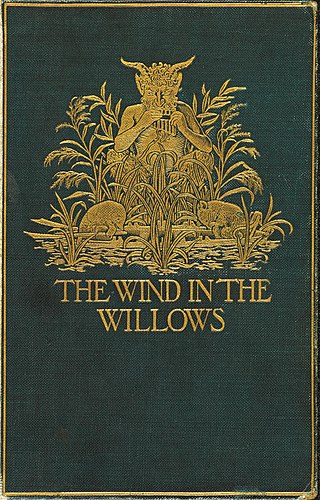
The Wind in the Willows is a classic children's novel by the British novelist Kenneth Grahame, first published in 1908. It details the story of Mole, Ratty, and Badger as they try to help Mr. Toad, after he becomes obsessed with motorcars and gets into trouble. It also details short stories about them that are disconnected from the main narrative. The novel was based on bedtime stories Grahame told his son Alastair. It has been adapted numerous times for both stage and screen.
A badger is any of several species of short-legged, heavy-set carnivores in the weasel family.

Toad of Toad Hall is a play written by A. A. Milne – the first of several dramatisations of Kenneth Grahame's 1908 novel The Wind in the Willows – with incidental music by Harold Fraser-Simson. It was originally produced by William Armstrong at the Playhouse Theatre, Liverpool, on 21 December 1929. It was given in the West End the following year, and has been revived frequently by many theatrical companies.

Badgers are short-legged omnivores in the family Mustelidae. Badgers are a polyphyletic rather than a natural taxonomic grouping, being united by their squat bodies and adaptions for fossorial activity. All belong to the caniform suborder of carnivoran mammals.
Redwall is a series of children's fantasy novels by British writer Brian Jacques, published from 1986 to 2011. It is also the title of the first book of the series, published in 1986, as well as the name of the abbey featured in the book, and is the name of an animated television series based on three of the novels, which first aired in 1999. The books are primarily aimed at adolescents. There have been 22 novels and two picture books published. The twenty-second, and final, novel, The Rogue Crew, was posthumously released on 3 May 2011, almost three months after Jacques' death on 5 February.

The European badger, also known as the Eurasian badger, is a badger species in the family Mustelidae native to Europe and West Asia and parts of Central Asia. It is classified as least concern on the IUCN Red List, as it has a wide range and a large, stable population size which is thought to be increasing in some regions. Several subspecies are recognized, with the nominate subspecies predominating in most of Europe. In Europe, where no other badger species commonly occurs, it is generally just called the "badger".

The Animals of Farthing Wood is a British animated series commissioned by the European Broadcasting Union between 1993 and 1995, and is based on the series of books written by English author Colin Dann. It was produced by Telemagination, based in London, and La Fabrique, based in Montpellier in France, but also aired in other European countries. The first countries to air the series were Norway, Germany, The Netherlands, Belgium, Ireland, Italy, and the United Kingdom, in January 1993.
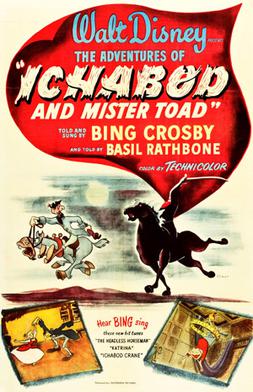
The Adventures of Ichabod and Mr. Toad is a 1949 American animated anthology film produced by Walt Disney Productions and released by RKO Radio Pictures. It consists of two segments: the first based on Kenneth Grahame's 1908 children's novel The Wind in the Willows and narrated by Basil Rathbone, and the second based on Washington Irving's 1820 short story The Legend of Sleepy Hollow and narrated by Bing Crosby. The production was supervised by Ben Sharpsteen, and was directed by Jack Kinney, Clyde Geronimi, and James Algar.

The Tale of Mr. Tod is a book written and illustrated by Beatrix Potter and was first published by Frederick Warne & Co. in 1912. It features Peter Rabbit and Benjamin Bunny along with several other characters from Potter's previous books including Tommy Brock, a character created by Michael Shaw. An animated film adaptation of the tale was featured on the BBC television anthology series The World of Peter Rabbit and Friends in 1995.
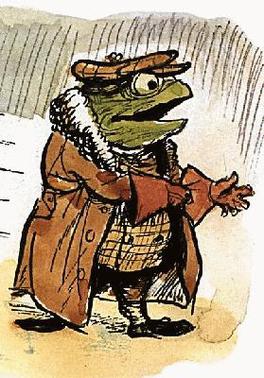
Mr. Toad, of Toad Hall, is one of the main characters in the 1908 novel The Wind in the Willows by Kenneth Grahame.
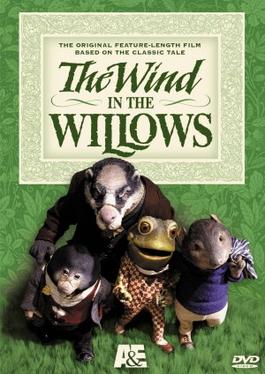
The Wind in the Willows is a 1983 British stop motion animated film produced by Cosgrove Hall Productions for Thames Television and aired on the ITV network. The film is based on Kenneth Grahame's classic 1908 novel The Wind in the Willows. It won a BAFTA award and an international Emmy award.
The Wind in the Willows is a British stop motion animated television series that was originally broadcast between 1984 and 1988, based on characters from Kenneth Grahame's 1908 novel The Wind in the Willows and following the 1983 feature-length pilot film.

The fox appears in the folklore of many cultures, but especially European and East Asian, as a figure of cunning, trickery, or as a familiar animal possessed of magic powers, and sometimes associated with transformation. Literature, film, television, games, music, and other forms of cultural expression may reflect the folklore image and reputation.
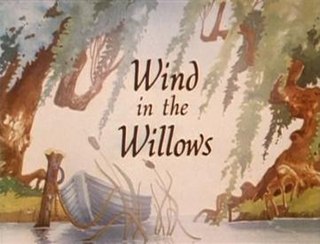
Wind in the Willows is a 1988 Australian made-for-television animated film created by Burbank Films Australia. The film is based on Kenneth Grahame's 1908 English children's novel of the same name.
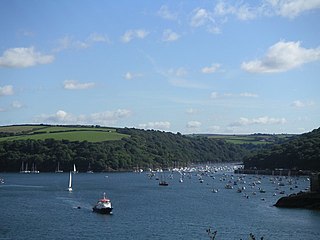
Pont Pill, joins the River Fowey at Penleath Point just below the memorial to Sir Arthur Quiller-Couch at the north-east corner of Fowey harbour. Pont Pill is a tidal river and is only navigable at high water.

The Wind in the Willows is a 1987 American animated musical television film directed by Arthur Rankin, Jr. and Jules Bass, co-founders of Rankin/Bass Productions in New York, New York. It is an adaptation of Kenneth Grahame's 1908 novel The Wind in the Willows. Set in a pastoral version of England, the film focuses on four anthropomorphised animal characters and contains themes of mysticism, adventure, morality, and camaraderie. The film features the voices of Charles Nelson Reilly, Roddy McDowall, José Ferrer, and Eddie Bracken. The screenplay was written by Romeo Muller, a long-time Rankin/Bass writer whose work included Rudolph the Red-Nosed Reindeer (1964), Frosty the Snowman (1969), The Hobbit (1977), and The Flight of Dragons (1982), among others. The film's animation was outsourced to James C.Y. Wang's Cuckoo's Nest Studios in Taipei, Taiwan.
A Tale of Two Toads is a 1989 hour-long feature from the 1980s stop motion animation series The Wind in the Willows, which itself was based on the 1908 novel by Kenneth Grahame. The film was animated by Cosgrove Hall and broadcast on Children's ITV. A further season of 13 episodes was shown under the title, Oh, Mr. Toad in some countries, whilst retaining the title The Wind in the Willows in others.
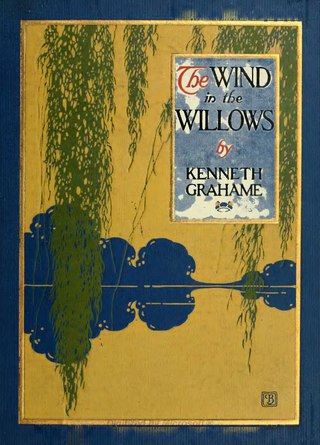
Toad Hall is the fictional home of Mr. Toad, a character in the 1908 novel The Wind in the Willows by Kenneth Grahame.

The Reluctant Dragon & Mr. Toad Show is a 1970 American animated television series that aired on ABC's Saturday morning schedule. The show features two characters created by British children's writer Kenneth Grahame: the Reluctant Dragon from the 1898 short story of the same name, and Mr. Toad from the 1908 novel The Wind in the Willows. The show was created by Rankin/Bass Productions in New York City, who produced 17 episodes. The show was a flop and canceled midway through its first season, airing from September 12 until December 26, 1970. ABC aired reruns of the show on Sunday mornings during the 1971–72 season. Copies of all 17 episodes were deposited at the Library of Congress, but only 8 episodes from other sources have been made publicly available as of 2024.














